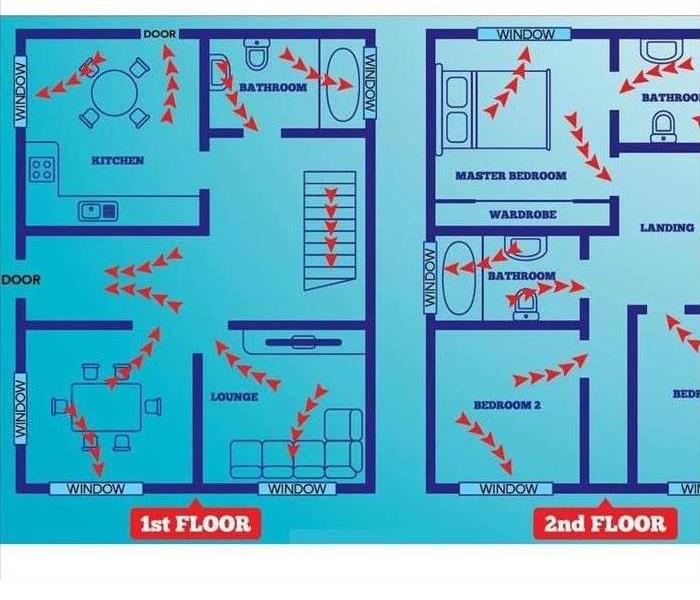Make an Escape Plan For Your Elgin Home
11/12/2020 (Permalink)
In the past 40 years, escaping from a fire has dropped from 17 minutes to less than 3 minutes due to the evolution of materials in modern homes. This makes it vital to create and practice an emergency escape plan. Home fires are the single most common disaster across the nation, but only 26% of Americans have developed an escape plan for a fire.
When developing your plan, here are a few suggestions:
- Draw a map of each level in your home. Locate all the doors, windows, and identify two ways to exit each room.
- Consider a collapsible escape ladder for your second and third floors. You should only buy them from a recognized testing laboratory.
- Choose an outside meeting place. It should be in front of your home, but also a safe distance away from the fire.
- Some examples include: Neighbor’s house, light post, mailbox, or stop sign.
- If your doors or windows have security bars, make sure the bars have emergency release devices inside so they can be opened immediately.
- Emergency release devices do not compromise your security
- Teach children how to escape on their own in case you cannot help them.
Pets are a part of your family too. Half of a million pets are affected by home fires each year. Here are a few tips to creating an escape plan for your animal(s):
- Pets will be afraid. Put your dog on a leash and keep your cat in a carrier. This will secure them with you and prevent them from fleeing.
- Identify your pet’s favorite hiding place ahead of time, as this is where they will most likely be hiding if a fire starts.
- Post “pet rescue stickers” to a front window, in an easy-to-spot location. The decal includes number of pets in your home, so rescuers know who to look for when entering.
When you are not home, contain them near an exit. It will provide a better chance of firefighters finding your animal.






 24/7 Emergency Service
24/7 Emergency Service
